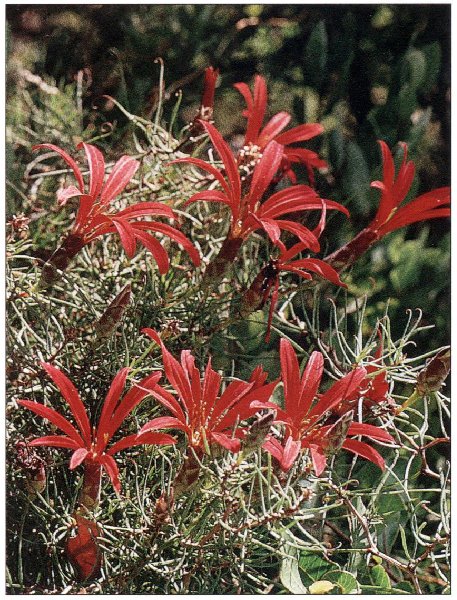Sprawling subshrublet with stems 8-15cm long, sometimes supported by dwarf alpine scrub. Leaves very dense, especially towards the base, 1.5-5cm long, sessile, linear-subulate, revolute, bright green, leathery, with or without rudimentary hook-like tendrils. Floral involucres cylindrical, 2.5-3cm by 8-15mm with seven or eight series of bracts, the uppermost oblong and crowned with a tuft of hairs, and about ten orange-scarlet, pure red or rosy red ray florets 2.5-2.8cm by 5-8mm Chile, along the length of the central cordillera in mobile scree, boulder fields, among alpine scrub and ridge crests at 1700-3000m. By good fortune, the dwarfest forms can keep their character in cultivation. The typical climbing or trailing species, M. subulata forma subulata, from somewhat lower altitudes can be as short as 30cm, but it is generally a great deal more with flexuous, more slender stems and wider spaced, longer, narrower leaves 3.5-7cm long by 1mm with definite, small curling tendrils. The ray florets also tend to be slightly longer and narrower. Chile, throughout the main central cordilleras. Very rare in Argentina in the south of this range. M. rosea, with stems 10-50cm long, is a Chilean endemic of similar distribution but differs in its smaller involucres and leaves tomentose on the undersides. Also, the ray florets are 2cm by 5-6mm, cream or pale yellow with a reddish reverse. It can form a sprawling subshrublet. Flowering earlier, late spring to early summer. [Pl.282].

Sign up for our newsletter to receive our monthly update direct to your inbox. Featuring our latest articles and news.
Built by Atomic Smash

